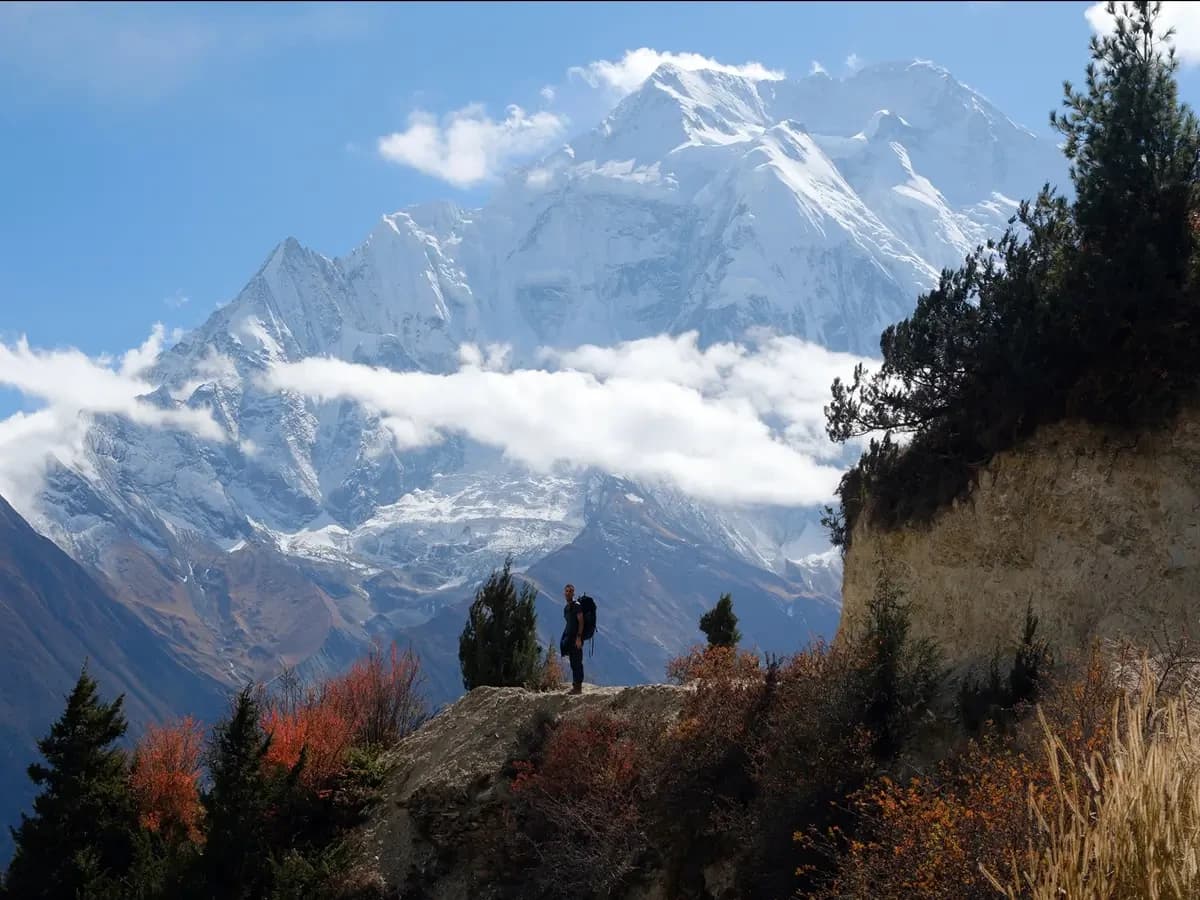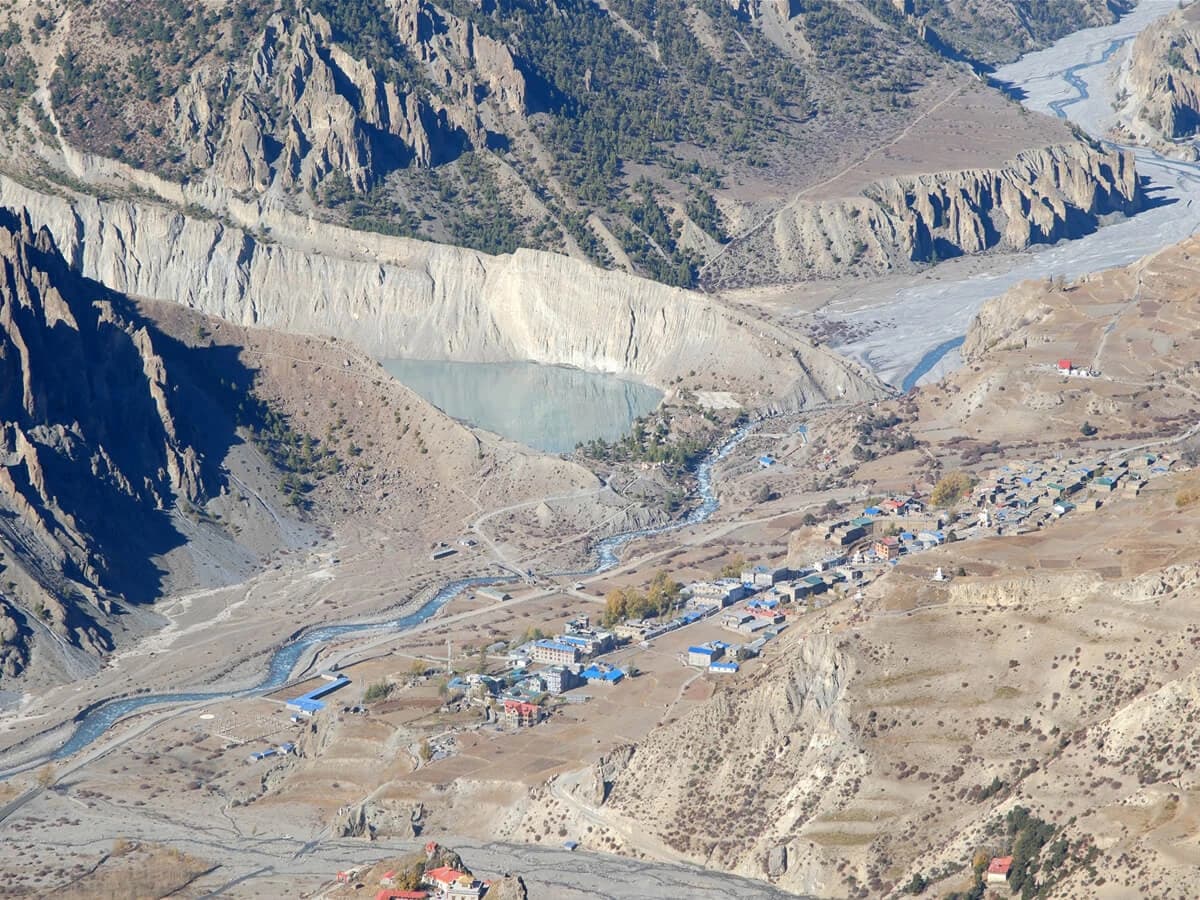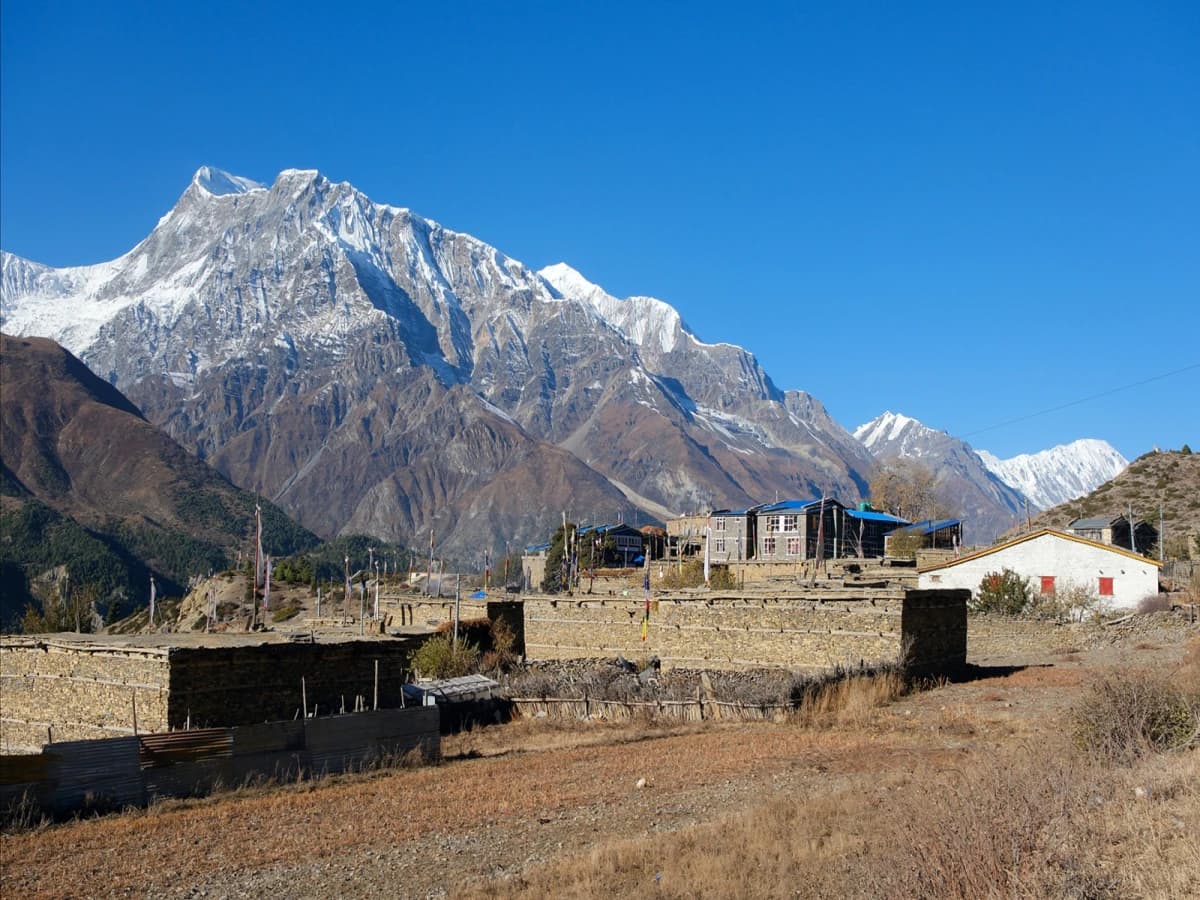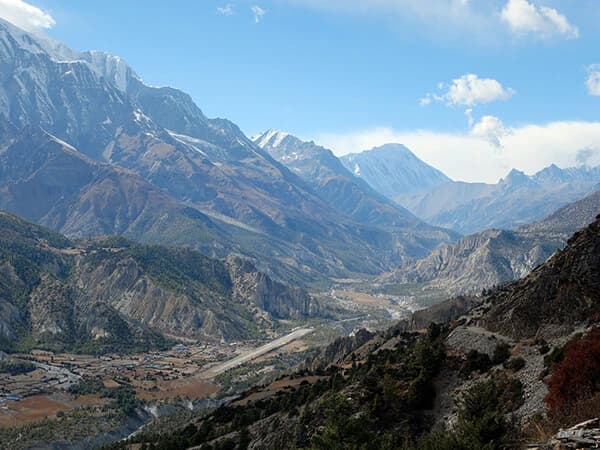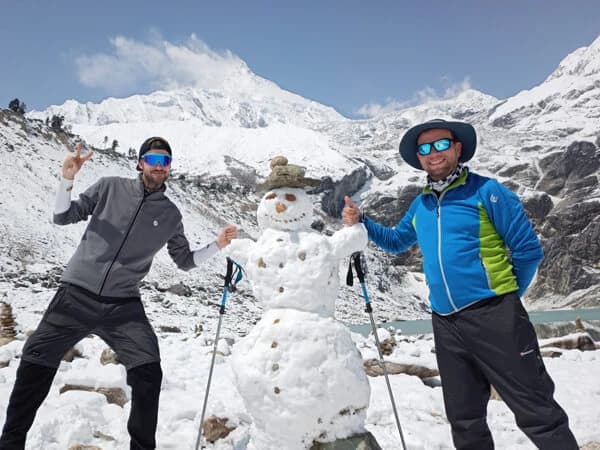This 11-day New Annapurna Trekking Trails (NATT) itinerary, depending on your preference, starts from either Kathmandu or Pokhara. Which officially begins from Besisahar, offering an authentic Himalayan experience by avoiding motorable roads. The journey takes you through diverse landscapes, from lush forests to the high alpine desert, and across the strenuous Thorong La Pass (5,416 meters). Immerse yourself in the local Gurung and Manangi cultures, stay in traditional teahouses, and take in the spectacular views of the Annapurna and Dhaulagiri massifs.
New Annapurna Trekking Trails (NATT): 11 Days
New Annapurna Trekking (NATT) Trails Overview
The New Annapurna Trekking Trails (NATT), as the name suggests, is an alternative to the Classic Annapurna Circuit Trek. This journey steers you away from the recently constructed roads along the Annapurna trails and takes you to a more serene route, offering magnificent views of the Annapurna landscape.
On most parts of your journey, you will trek through the distinct red and white paint through serene villages, lush forests, and high mountain regions. As you make your way from one community to another, you will find the opportunity to experience the unique Himalayan culture and traditions and the warm hospitality of the local communities.
Developed by the Annapurna Conservation Area Project (ACAP), the New Annapurna Trekking Trails (NATT) aim to preserve the original charm of trekking in the iconic Himalayan trails of this region. Away from the touristy crowd, you will make your way through diverse scenery, comprising lush forests of the subtropical lowlands to arid desert-like Trans-Himalayan plateaus in the higher elevation zones.
During the NATT trails trek, you will find majestic vistas of the Annapurna and Dhaulagiri massifs and take in the views of prominent peaks such as Annapurna I (8,091 m), Annapurna II (7,937 m), Machapuchhre (Fishtail Mountain) (6,993 m), Dhaulagiri (8,167 m), Gangapurna (7,455 m), Annapurna South (7,219 m), Khangsar Kang (7,485 m), Nilgiri (7,061 m), Himchuli (6,441 m), and several other surrounding peaks. Among many highlights of the NATT trek, the Ice Lake Trek Nepal, locally known as Kicho Tal, poses challenging ascents but rewards you with a pristine view of the turquoise lake.
Global Adventure Trekking’s New Annapurna Trekking Trails (NATT) itinerary is designed keeping in mind Himalayan adventure and tranquil experiences. It is a perfect blend of challenging trekking and cultural experiences.
Join us to explore the glorious trekking trails of the Annapurna region. Book your NATT adventure today!
Why go on the New Annapurna Trekking Trails (NATT) Trek?
The New Annapurna Trekking Trails (NATT) is a unique opportunity to experience the authentic mountain culture and beauty of the Annapurna region. Away from the road construction, the NATT route is a suitable option, providing access to a more authentic journey across this Himalayan route. This trek further allows you to:
Escape the Tourist Crowds and Dusty Trails
One of the main advantages of the New Annapurna Trekking Trails (NATT) is that it avoids the new road constructions that intersect with the Clasical Annapurna Circuit. By taking on the new route, you will enjoy an unobstructed, tranquil experience, avoiding the bustling crowds and the dusty trails that vehicles leave behind. This ultimately lets you enjoy the immersive trekking experience, taking you back to the golden age of Annapurna exploration.
Authentic Cultural Encounters
The NATT trails take you into the remote and less-frequented villages along the Annapurna trekking trails. Your journey lets you encounter deeper and more genuine insights into the local cultures of the Gurung, Manangi, and Thakali communities. During your visit, you can experience warm hospitality and interact with the friendly villagers as you observe their traditions and way of life.
Pristine Natural Beauty
As you take on the remote trails, you pass through the stunning and unspoiled beauty of the Annapurna region. This route, away from the commercialized main trail, takes you deep inside rhododendron forests and crosses pass terraced farmlands and arid-desert-like terrain. You are exposed to the natural beauty, with immersive views of the Annapurna and Dhaulagiri massifs at every turn.
Safer and Well-Marked Trails
The NATT trails are developed by the Annapurna Conservation Area Project (ACAP) to promote the authentic beauty and trekking experience in the Annapurna region. Along the trails, you will find well-marked red and white or blue and white paint, guiding you from one destination to another. This initiative helps trekkers navigate the paths easily, helping enhance and create a safer trekking experience.
New Annapurna Trekking Trails (NATT) Cost: Permits, Guides, and Transport
The 11-Days New Annapurna Trekking Trails (NATT) typically range between USD 700 to USD 1000 per person. This generally covers a round-trip drive between Kathmandu and/or Pokhara, all necessary trekking permits (ACAP and TIMS), the cost of a NATT guide, all meals during the trek, and accommodation in local teahouses. This, however, does not include tips, porter charges, extra expenses like Wi-Fi and charging, and emergency rescue costs. You will need to carry extra cash for these personal expenses. Additionally, prices may change depending on group size, specific preferences, and add-on services.
New Annapurna Trekking Trails (NATT) Last Minute Booking
Looking for a last-minute booking for this incredible New Annapurna Trekking Trails (NATT) adventure? We offer a special 10% discount on this incredible Himalayan journey. Book your trek 7 to 14 days before the trek and join our fixed departure dates. For more information, contact our expert representatives.
New Annapurna Trekking Trails (NATT) Highlights
- Traverse the thrilling Thorong La Pass, one of the highest trekking passes in the world, at 5,416 meters.
- Witness the awe-inspiring sunrise over the Himalayas from Thorong La Pass.
- Explore the ancient and sacred pilgrimage site of Muktinath Temple.
- Trek through the world's deepest gorge, the Kali Gandaki Gorge
- Immerse yourself in the unique culture of the Gurung and Manangi villages.
- Enjoy panoramic views of the Annapurna, Dhaulagiri, and Manaslu mountain ranges.
- Walk along trails painted with red and white markers, indicating the NATT route.
- Discover serene alpine lakes like Gangapurna Lake near Manang.
- Enjoy the peace and tranquility of trekking on trails away from motorable roads
A Typical Day During the NATT Trek
A typical day during the New Annapurna Trekking Trail starts with a sunrise view from your teahouse, followed by a hearty breakfast. After breakfast, you leave your teahouse behind and set off along the serene Annapurna trails at around 8 AM. The journey takes you through stunning Annapurna landscapes, comprising subtropical forests and high-altitude, arid, desert-like rocky terrains.
After a few hours of trekking, you will stop for lunch at a teahouse along the route. You can rest and savor the taste of local Nepali cuisine. After spending some time refueling, you will continue with the rest of the day’s trek. The afternoon trek is typically shorter, enabling you to reach your overnight destination by early evening.
Since you still have plenty of daylight left, you can explore local villages and visit their monasteries. Head back to the teahouse for dinner as evening approaches. After dinner, you can sit by the communal fireplace and share stories with fellow trekkers before heading to bed. Experience the Himalayan lifestyle on the NATT trek. Book your adventure now!
Customized New Annapurna Trekking Trails (NATT) 2026/2027
Our NATT trekking offers a serene journey along the less-frequented trails of the Annapurna region. Though meticulously crafted, we understand that each traveler has their unique preferences. To adhere to your needs and requirements, we offer a fully customizable New Annapurna Trekking Trails (NATT) trek. By customizing the NATT trek, you can experience a seamless blend of Himalayan adventure and culture immersion at your desired pace, add acclimatization days, or include a trek extension to some of the most beautiful regions in the Annapurna Conservation Area.
-
Ghorepani Poon Hill Trek:
The Ghorepani Poon Hill trek is an introductory trek into the vast Himalayas of Nepal. During this journey, you will traverse the breathtaking landscapes and enjoy a stunning sunrise over the Annapurna and Dhaulagiri massifs. This trek takes you to the lower regions of the Annapurna trails and is ideal for trekkers of all experience levels, including beginners and families.
-
Mardi Himal Base Camp Trek:
The Mardi Himal Base Camp Trek is a moderate Himalayan adventure that takes you through rhododendron forests, alpine meadows, and narrow ridges. This trek reaches a maximum altitude of 4,500 meters at the Mardi Himal vantage point, offering stunning panoramic views of Machhapuchhre (Fishtail), Annapurna South, and Hiunchuli. This is a tea house trek that is suitable for trekkers of all levels of expertise.
-
Tilicho Lake Trek:
If you still have time on hand, you can take a short detour to Tilicho Lake. The journey consists of an additional 4-day trek from Manang, a crucial acclimatization stop on the NATT trail. The Tilicho Lake Trek is one of the world’s highest lake and offers a spectacular view of the pristine waters and surrounding landscapes.
New Annapurna Trekking Trails (NATT): 2026/2027 Early Bird Offer
Book the New Annapurna Trekking Trails (NATT) Trek for 2026 and secure your spot on this incredible Himalayan adventure. Lock in the best price and enjoy flexible cancellation, including free cancellation up to 60 days before your departure date.
New Annapurna Trekking Trails (NATT) Early Bird Booking Benefits:
- Discounted rates up to 10%
- Book 6 to 12 months in advance and get 10% off.
- Book 3 to 6 months in advance and get 5% off.
- Bonus spa and wellness hampers.
- Priority access to preferred departure dates.
- Flexible cancellations and trip upgrades.
Note:Slots are Limited, Reserve your NATT Trails Trek 2026 Spot Now!
New Annapurna Trekking Trails Cost Details
The New Annapurna Trekking Trails trek price depends on several factors. Depending on your preferred luxury level, budget, routes, and number of days, the cost of the NATT Trek changes.
If you choose our standard package, following our above itinerary, you will find the following facilities during the New Annapurna Trekking Trails Trek in Nepal.
Trip Gallery
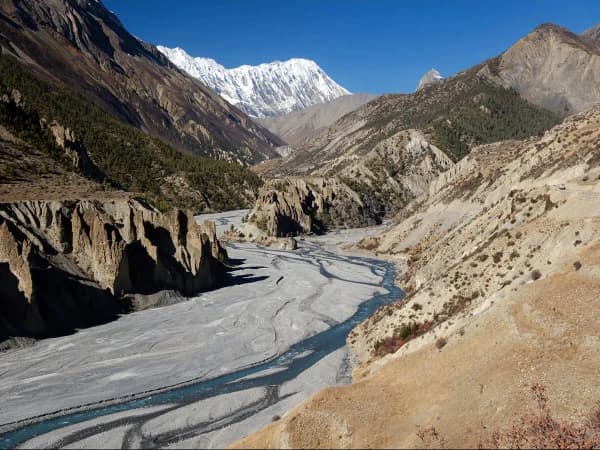
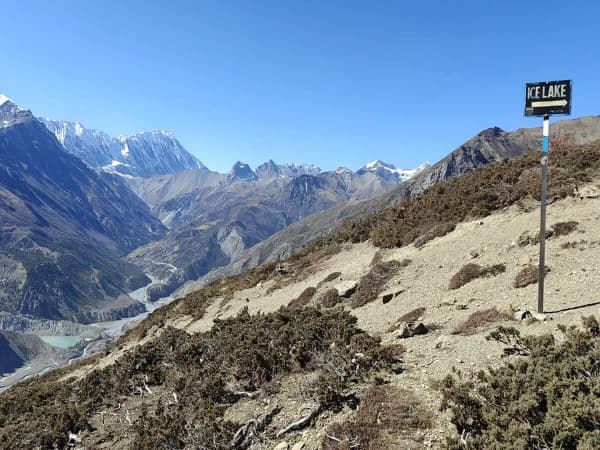
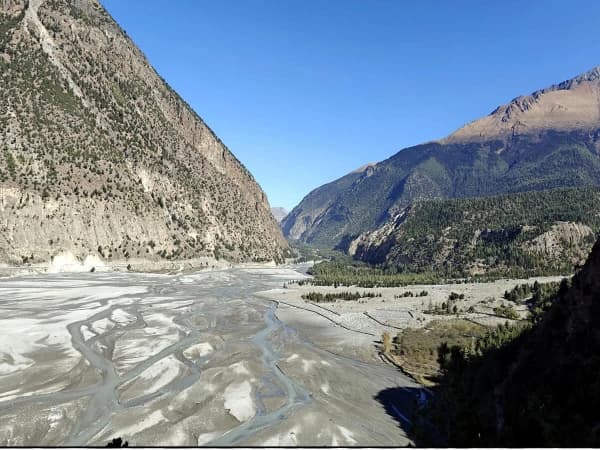
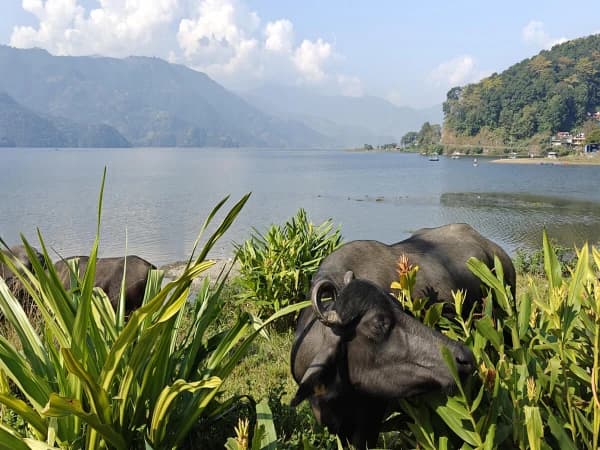

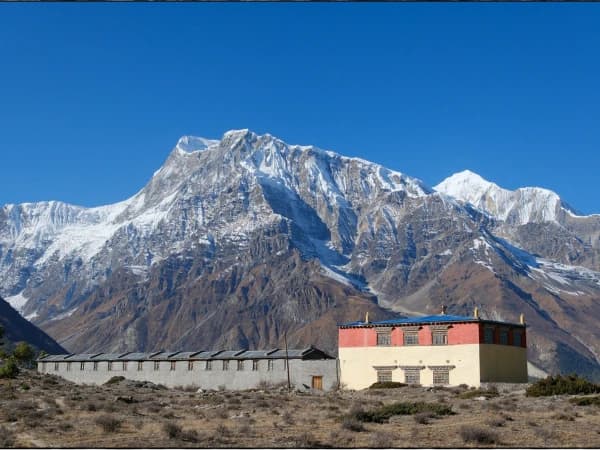

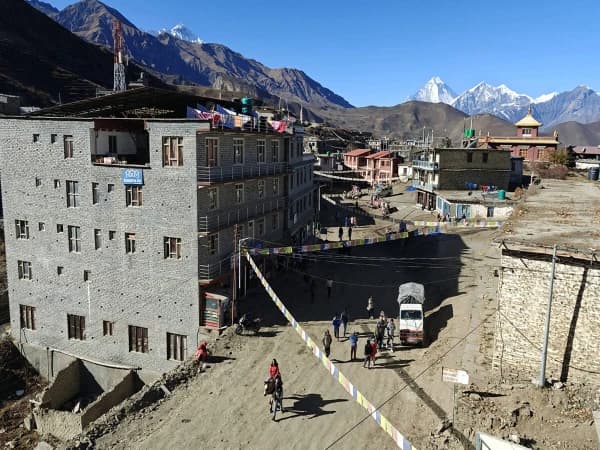
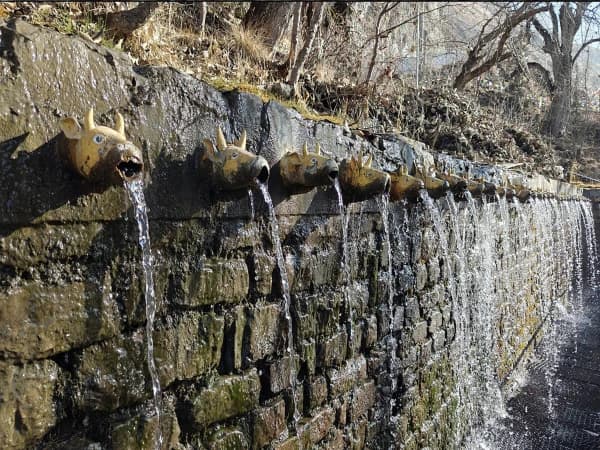

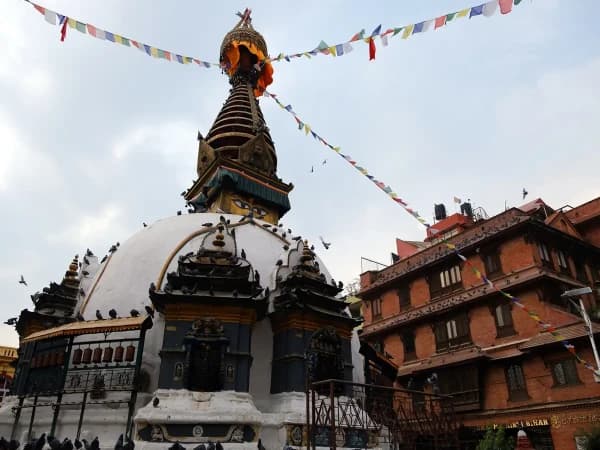
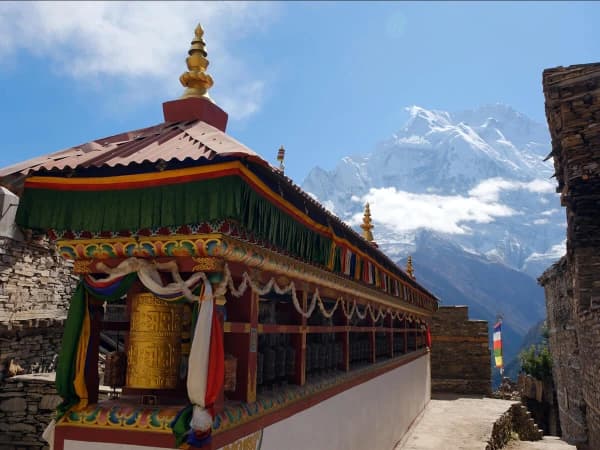
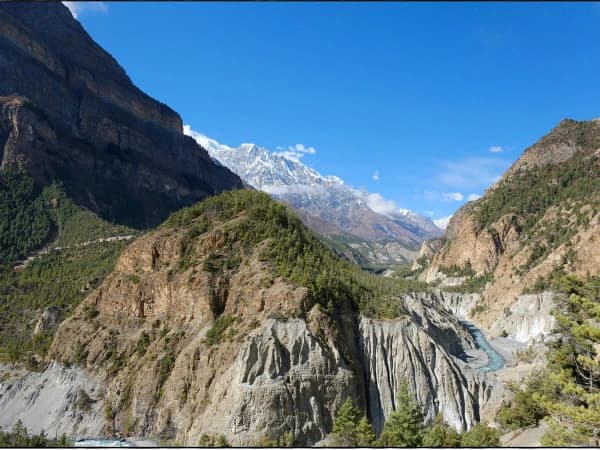
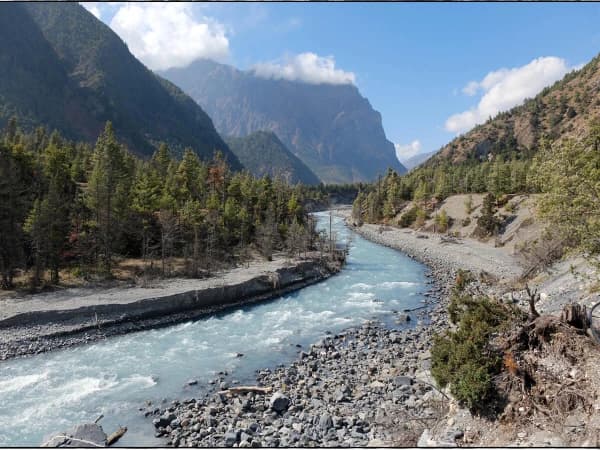
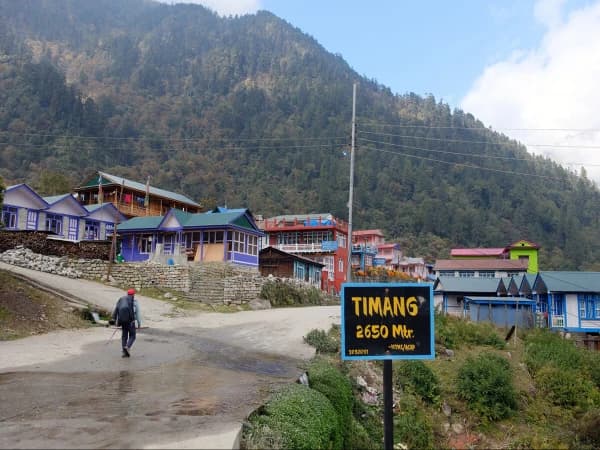
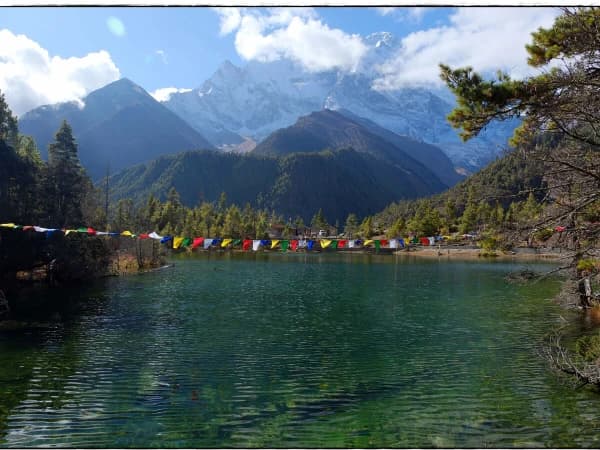
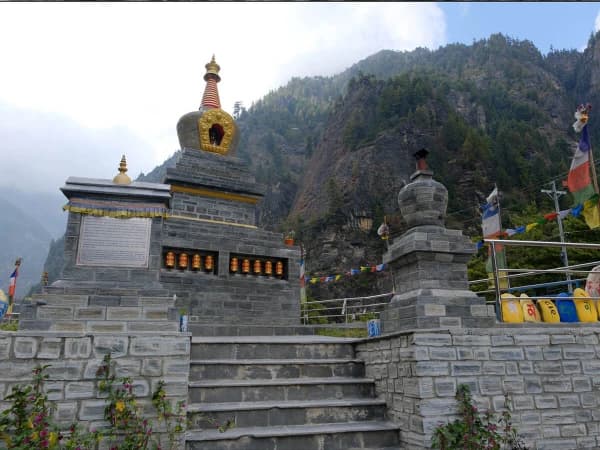
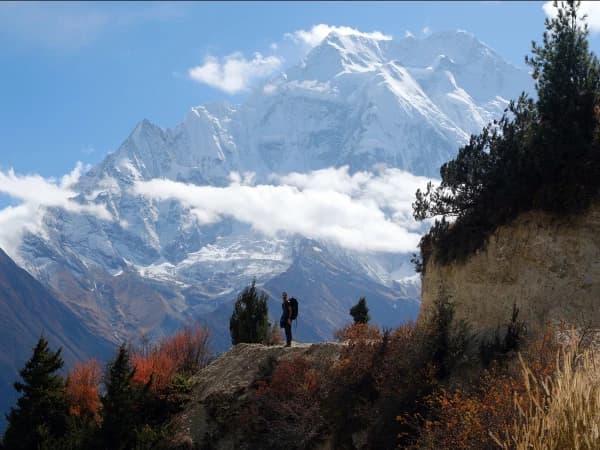
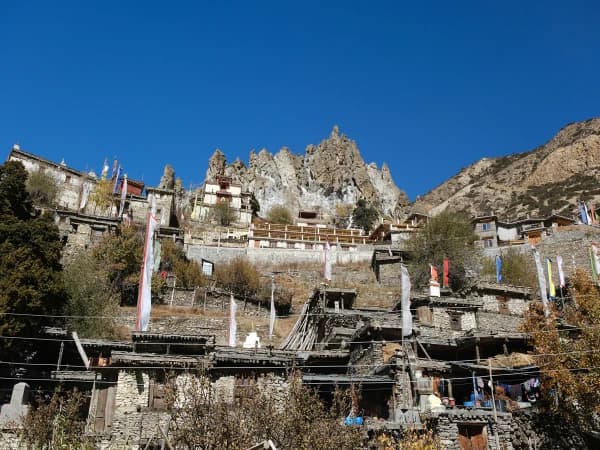
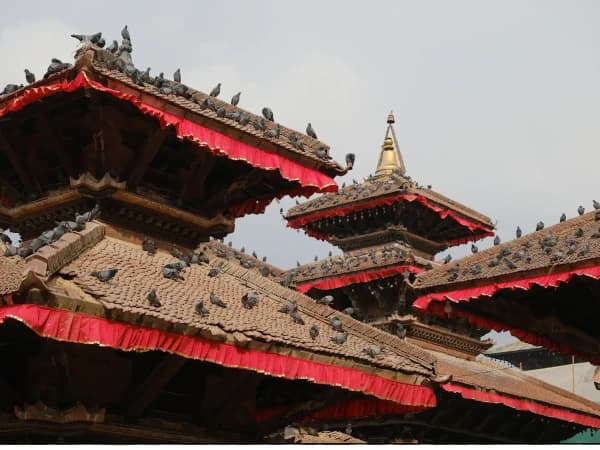
New Annapurna Trekking Trails (NATT): 11 Days Itinerary Outline
- Day 01: Drive from Kathmandu (or Pokhara) to Besisahar 178/78 km./760 m./2493 ft./5/6 hrs
- Day 02: Drive from Besisahar to Chame 65 km./2670 m/4/5 hrs
- Day 03: Trek from Chame to Upper Pisang 13 km./3310 m/5/6 hrs
- Day 04: Trek from Upper Pisang to Ngawal 10 km./3660 m./5/6 hrs
- Day 05: Trek from Ngawal to Braka via Julu 8 km./3470 m./4/5 hrs
- Day 06: Trek from Braka to Ice Lake 4620 m.and back to Manang 12 km/3,540 m./7/8 hrs
- Day 07: Trek from Manang to Yakkharka (4,020 meters) or Churi Lethar 10 km.(4,200 meters) 5/6 hrs
- Day 08: Trek from Churi Ledar to Thorong Phedi 5 km./4450 m/4/5 hrs
- Day 09: Trek from Thorong Phedi to Muktinath (3,800 meters) via Thorong La Pass 16 km./5416 m./7/8 hrs
- Day 10: Trek from Muktinath to Kagbeni via Lubra Village 10 km./2810 m./5/6 hrs
- Day 11: Drive from Kagbeni to Pokhara 161 km./800 m/ 7/8 hrs
New Annapurna Trekking Trails (NATT): 11 Days Itinerary
Depending on your preferred location, you can begin the NATT trek from either Kathmandu or Pokhara. To mark the beginning of your Himalayan adventure, you will drive along the rolling hills to Besi Sahar, leaving the vibrant Kathmandu or the tranquil lakeside city of Pokhara behind.
The journey from Kathmandu follows the scenic Prithvi Highway, a winding route alongside the Trishuli and Marshyangdi Rivers. Driving from Kathmandu to Besisahar is long and exhausting. Keep a small daypack with essentials like water, snacks, and a book or music to accompany you on your journey. Whereas, from Pokhara, you can expect a shorter 2-3 hour drive, enjoying the lush hills and quaint rural life.
Besisahar, also the district headquarters of Lamjung, is considered the gateway to the Annapurna region and offers breathtaking views of the surrounding landscape. Here, you can experience the thrill in the air as trekkers prepare to take on the challenges that lie ahead on their Annapurna trek.
Note: If you wish to travel beyond Besisahar, you can hire a local jeep to Dharapani on the same day.
After an early morning breakfast in the Besisahar teahouse, you leave for your next overnight destination at Chame. Today, you will change to a 4WD Jeep as you get on this exciting Himalayan journey. The jeep ride is a key element of the NATT strategy, which allows trekkers to steer away from the motorable lower trails of the Annapurna region.
On today’s jeep ride, you will experience the thrill of driving the off-road sections following the Marshyangdi River Valley. The journey takes you deeper into the Annapurna Conservation Area, providing awe-inspiring views of the deep gorges, beautiful waterfalls, and charming villages like Tal and Dharapani.
After a 5-7 hour journey, you will reach Chame. Chame is the district administrative hub of Manang district. Take in the crisp Himalayan breeze and enjoy the breathtaking views of Annapurna II and Lamjung Himal as you head to your teahouse.
Pro Tip: The journey includes a dramatic shift in elevation. Keep yourself hydrated to avoid the risks of altitude-related sicknesses.
Today, you will officially begin your trek along the serene and less-frequented trails of the New Annapurna Trekking Trails. You will leave Chame after breakfast and follow a dense path along pine and fir forests. Your journey continues along the Marshyangdi River as you head to a steep and narrow valley. Upon reaching the narrow valley, you will find a dramatic landscape with views of the Paundga Danda rock face. The Paundga Danda rock face is a massive curved slab of stone rising 1,500 meters from the river. Keep your cameras ready to capture this iconic view before heading towards the suspension bridge across the Marshyangdi River.
After crossing the suspension bridge, the trail ascends to a more scenic route toward Upper Pisang. You will find panoramic vistas of the Annapurna range and the valley below as you make the final push to Upper Pisang. The final leg of today’s journey presents you with a steady climb. Upon conquering this ascent, you will reach your overnight destination of Upper Pisang. In Upper Pisang, you will find traditional architecture, including stone houses and an ancient monastery.
Today’s trek rewards you with incredible panoramic vistas of the Annapurna landscape as you take on the high trail to Ngawal. This is a classic NATT route that is known for its breathtaking scenery.
The journey begins with a steady climb from Upper Pisang. You will ascend over the Marshyangdi valley and find the views of the entire trek. However, compared to the lower belt trails, this section can be more challenging, as you will be trekking through high-altitude terrains with uninterrupted views of the Annapurna massif, including Annapurna II, III, IV, Gangapurna, and Tilicho Peak.
Continue your journey along the ancient village of Ghyaru. Here, you can explore the picturesque monastery and traditional stone houses. From Ghyaru, you will move forward into the high-altitude terrains to the serene village of Ngawal.
Pro Tip: The high-altitude treks are exposed, and the sun can be intense at this elevation. Remember to apply sunscreen, wear a wide-brimmed hat, and stay hydrated.
Take in the final views of the Himalayan landscape from the high village of Ngwal before continuing with your trek. Compared to the previous day’s trek, today’s trek is gentle and consists of descents along the beautiful trails toward the main valley floor. You will find a different but stunning perspective of the Annapurna range as you trek the downhill trails through rocky terrains.
The trek takes you past juniper bushes and across serene plateaus over the Marshyangi River before eventually passing the sparse settlement of Julu to your overnight destination at Braka, or the Braga Village.
The Braka Village is an ancient settlement within the New Annapurna Trekking Trails with rich cultural significance. Perched on a cliffside, you will find the Braga Gompa, the oldest in the Manang district. After checking in at your teahouse, you can explore this ancient gompa and relish the sights of the stunning collection of statues and thangkas
You will follow the principle of “climb high, sleep low” on this acclimatization day, which is designed to help your body cope with the increasing altitude. The day begins with an early breakfast before heading to the incredible Kicho Tal, famously known as the Ice Lake.
The journey includes demanding ascents and continuous climbing. Ensure you walk at a slow and steady pace. Upon reaching the Ice Lake, your efforts are rewarded with spectacular views of the Annapurna Range and the turquoise water. This high-altitude basin has an appearance of a natural amphitheater amid snow-clad mountains that mostly remain frozen throughout the year.
Take your time to appreciate the raw Himalayan beauty and capture this magical moment in your camera as you enjoy your packed lunch in this awe-inspiring setting. To end today’s journey, you will descend to Manang via Braka. Overnight stay in Manang.
Pro Tip: The hike to Ice Lake is demanding. It’s recommended to start the trek early. Carry at least 2 liters of water and plenty of high-energy snacks. You can also extend your trek by an additional day to explore the local gompas of Manang and the glacial Gangapurna Lake.
After your Manang adventure, you will continue toward the strenuous Thorong La Pass. The journey involves steady ascents as you exit the Marshyangdi Valley and enter the Jarsang Khola Valley. During your journey, you will experience a dramatic transformation as the lower-altitude vegetation transforms into alpine grasses and juniper bushes. You will further experience a loss of oxygen.
From Jarsang Khola Valley, you will find relatively gentle trails. However, the high altitude makes the trek challenging. Depending on your condition, you will stop at either Yak Kharka, where you will find herds of the shaggy yaks grazing on the pastures, or continue to Churi Ledar.
Pro Tip: Tilicho Lake Extension
Take a 4-day detour to Tilicho Lake from Manang. This journey takes you through the rugged yet spectacular trails across Himalayan communities, including Khangsar Village, Siri Kharka, and Tilicho Base Camp, before reaching Tilicho Lake. Though strenuous, the journey gives you a rewarding view of the turquoise glacial lake set against a background of snowy peaks.
For more details about the Tilicho Lake Trek extension, contact our travel experts.
Leaving Yak Kharka or Churi Ledar behind, you will continue your ascent across the Jarsang Khola. The trails take you along the eastern banks of the river before traversing a steep and dramatic slope. It is advised to cross this section with caution, as it poses high risks of injuries.
After a 3 to 4-hour hike, you will reach Thorang Phedi. You will check into your teahouse located at the bottom of the pass. Take the time to rest and mentally prepare for the demanding Thorong La Pass trek ahead.
Pro Tip: While some may push to the High Camp today, staying at Thorong Phedi is a safer option, as it allows you to acclimatize and significantly reduces the chances of altitude sickness.
Today is among the main highlights of the New Annapurna Trekking Trail. The journey consists of challenges and rewards as you take on the strenuous Thorong La Pass. You will begin the trek before dawn, at around 3 or 4 AM. Navigate through the rugged Himalayan terrain in pitch darkness with the help of headlamps.
The journey to Thorong La Pass is demanding. Ensure careful footing and ascend at a slow and steady pace. You will reach the summit just in time for a rewarding sunrise view from the 5,416-meter elevation. From this high pass, you will find yourself surrounded by a 360-degree panorama of snow-capped peaks and the incredible landscape.
After spending some time in the Thorong La Pass, your descent toward Muktinath begins. In this sacred pilgrimage site, you can explore the revered temple of Muktinath, dedicated to Lord Vishnu. Overnight stay at Muktinath.
Pro Tip: You will begin the trek in extreme cold and finish in the afternoon. Layering is crucial today. Also, protect your bare skin from the wild and cold during the ascent.
Your morning starts with a hearty breakfast in the Muktinath teahouse. After breakfast, you can explore the sacred Muktinath Temple, a revered site for both Hindus and Buddhists. Here, you can visit the main temple dedicated to Lord Vishnu and witness the eternal flame.
From Muktinath, you will begin your journey to Kagbeni. However, contrary to the popular routes, we will take a detour and visit the secluded village of Lubra, one of the few villages that still practices the Bon religion. To reach Lubra, you will need to follow the trails along the barren and rugged lands of lower Mustang.
From Lubra, you will descend toward the Kali Gandaki Valley and head to your overnight destination at Kagbeni. You will follow the riverbed as you approach the medieval walled village of Kagbeni. Alongside its famed walls, you can explore the narrow alleyways, see the earthen-walled houses, and visit the red monastery.
Today is the final day of the NATT trek in Nepal. The day begins with a breakfast in your Kagbeni teahouse. After breakfast, you will set off for the final leg of your journey. You will take on a scenic drive in a shared jeep or bus through the dramatic Kali Gandaki Valley and pass through Jomsom, Marpha, and Tatopani. During your journey, you will transition from rugged terrains to lush subtropical forests before finally reaching the tourist hub of Pokhara’s Lakeside.
New Annapurna Trekking Trails (NATT): 11 Days Cost Details
Includes
Transportation
- Two-way transportation between Kathmandu (or Pokhara) and Besi Sahar and Kagbeni to Pokhara on a shared Jeep or bus.
New Annapurna Trekking Trails Permit Fees:
- Annapurna Conservation Area Project (ACAP) Permit
- TIMS Card
Accommodations:
- 10-night tea house accommodation during the trek as per the itinerary
Meals
- Full-board meals (Breakfast, Lunch, and Dinner)
- Seasonal Fruits
Additional Gear
- Sleeping bag and down jacket, if required
- Company Duffel Bag and T-shirt
- New Annapurna Trekking Trails (NATT) Trekking Map
Guides
- Government-certified, well-experienced Global Adventure Trekking guide
- Salary including insurance, equipment, accommodation, and food for your Nepalese Guide
Excludes
International Flights and Visa Fees
- International flights to and from Nepal
- Nepal Entry Visa Fees
Additional Expenses
- Entry fees or donations, museums, monasteries, while trekking, etc
- Rescue and Evacuation
- Emergency evacuation by Helicopter
Accommodation and Services
- An extra night's accommodation and food in Kathmandu in case of an earlier return from the mountain than the scheduled date.
- Laundry, towels, hot showers, internet access, recharging of batteries, and other items of a personal nature.
Transportation
- Alternative transportation in case of heavy rain, landslides, strikes, road blockades, etc.
Meals
- Meals other than those listed in inclusions (Hot and cold, alcoholic and non-alcoholic drinks)
Guides and Porter Expenses
- Porters (20 kg max weight limit)
- Tips for the guide and the porter
Add-ons & Options
Hotel in Kathmandu or Pokhara:
You can extend your stay at a 2-star standard hotel in Kathmandu, equipped with all modern amenities, for an additional cost of USD 50 per night per room. Rooms are provided on a twin-sharing BB basis.
Porter Services:
Hiring a porter isn't a luxury; it's a strategic choice for a safer and more enjoyable trek. A porter carries up to 20 kg of your gear, allowing you to focus on the trail and conserve energy for the high-altitude sections. Cost: USD 220 per porter for the entire trek (can be shared between two trekkers).
Transportation Options:
For a more personal commute with just your trekking team, hire a jeep from Kathmandu (or Pokhara) to Besi Sahar and Kagbeni to Pokhara (or Kathmandu) for an additional cost.
Kathmandu/PKR to BeshiShar: USD 150
Kagbeni to Pokhara: USD 185
Additional Trekking Days:
Looking for further adventures in the Annapurna region? You can extend your trek by adding a few additional days to explore some of the classic destinations. Explore the apple orchards of Marpha, rejuvenate with a therapeutic bath at the natural hot waters of Tatopani, and climb the stone steps of Ghorepani for the celebrated Poon Hill sunrise with a stunning Himalayan panorama. Contact us for more info
Jomsom-Pokhara Flight Option:
You can bypass the lengthy bus or jeep journey to Pokhara and opt for a short flight from Jomsom. Instead of continuing on the road from Kagbeni, you can trek for approximately 2-3 hours to reach Jomsom, where you can spend the night before catching an early morning flight to Pokhara the next day. USD 169
Dates & Availability
Select your preferred date
Essential Information
New Annapurna Trekking Trails (NATT) Permits and Trail Regulations Updates for 2026/2027
The following NATT trek information updates contain permit fees, trail regulations:
Permit Fee Updates (2026/2027)
| Permit | Standard Rate | SAARC Nationals’ Rate |
| Annapurna Conservation Area Project (ACAP) Permit | NPR 3000 per person | NPR 1,000 per person |
| TIMS Card | NPR 2000 per person | NPR 600 per person |
New Trail Regulations
-
Strict Regulations on Drone Usage:
Flying drones in the Annapurna Conservation Area is strictly controlled. All drone operators, including tourists, must obtain prior permission from the Civil Aviation Authority of Nepal (CAAN) and the Department of National Parks and Wildlife Conservation.
-
Mandatory Guide for All Trekkers:
As of recent updates, solo trekking is no longer permitted in most of Nepal's trekking regions, including the Annapurna Conservation Area. This rule, effective from April 2023, requires all foreign trekkers to be accompanied by a licensed guide hired through a government-registered trekking agency.
-
Emphasis on Respecting the Natural and Cultural Heritage:
Ensure that you follow the key guidelines, including following marked trails, carrying out all trash, minimizing the use of plastic, using refillable water bottles, and respecting the local culture by dressing modestly in villages.
Best Season for New Annapurna Trekking Trails (NATT) in Nepal?
Spring (March to May) and autumn (September to November) are the two best tourist seasons for NATT trekking in Nepal. These months typically have ideal conditions for trekking in the Himalayas. The weather is warm, and there are fewer chances of snowfall. The New Annapurna Trekking Trails in spring are adorned with spring blossoms, including wildflowers and the vivid rhododendron. Likewise, autumn is known for crisp visibility, providing unobstructed views of the Annapurna range, Machapuchhre (Fishtail Mountain) (6,993 m), Dhaulagiri(8,167 m), Gangapurna (7,455 m), Annapurna South (7,219 m), Khangsar Kang (7,485 m), Nilgiri (7061 m), Himchuli (6,441 m) and surrounding peaks.
New Annapurna Trekking Trails (NATT) Weather: Seasonal Overview
|
Weather Conditions |
|
|
Monsoon (June to August) |
|
|
| Autumn (September to November) |
|
|
| Winter (December to February) |
|
|
| Spring (March to May) |
|
Accommodation in the New Annapurna Trekking Trails (NATT) in Nepal
The New Annapurna Trekking Trails take you away from the conventional trekking route of the Annapurna, providing a more authentic experience. However, you can still find a wide range of teahouse and lodge accommodations that offer a glimpse into the diverse Himalayan culture of the Gurung communities in the lower hills, as well as the Tibetan-Buddhism-inspired Manangi culture in the high alpine zones. Throughout your trek, you will find simple, yet clean and comfortable rooms which is generally shared between two trekkers. You can expect warm hospitality from the local communities as you find refuge after a long day’s trek.
Extra facilities:
- Electricity and Charging:
Charging facilities are available in almost all teahouses along the NATT route. However, the teahouses usually charge between USD 2 and USD 5 per device. Electricity is more dependable in the lower regions. However, the higher up you travel, electricity can be scarce as most teahouses depend on solar energy for electricity. Bringing a portable power bank is highly advisable.
- Wifi and Mobile Network:
The New Annapurna Trekking Trails (NATT) routes have better access to Wi-Fi and mobile network compared to more remote trekking destinations. Mobile network coverage of NTC and NCELL is reliable in the lower regions up to Manang. In the higher elevation points, the signal can face disruptions and can be completely unavailable as you approach the Thorong La Pass. Wi-Fi is available in most teahouses up to Thorong Phedi and comes at an extra cost.
- Hot Showers:
Hot showers, usually powered by gas or solar geysers, are available in most teahouses for an additional fee. The cost typically increases with altitude.
New Annapurna Trekking Trail (NATT) Difficulty
The New Annapurna Trekking Trails (NATT) takes you into the heart of the iconic trekking region of Annapurna. Though the route consists of demanding terrains and diverse landscapes, this authentic trek is achievable for trekkers with good physical fitness. The Thorong La Pass is often considered the main challenge of this trek, due to its high elevation ( 5,416 meters).
Acclimatization for the New Annapurna Trekking Trails (NATT)
Due to the significant gain in altitude, you need to assess the risks of Acute Mountain Sickness (AMS) of altitude sickness. Take precautions to avoid the symptoms of altitude sickness by walking at a slow and steady pace, staying hydrated, and avoiding alcoholic beverages. In case you experience symptoms like dizziness, headache, and nausea, especially at altitudes above 2,500 meters, inform your guide immediately. Accessing your situation, the guide may suggest that you take rest, give you AMS medication like Diamox, suggest trekking to a lower and safer altitude, or request an emergency helicopter evacuation service.
Why Book the New Annapurna Trekking Trails (NATT) Trek with Global Adventure Trekking?
Global Adventure Trekking takes pride in being your trusted Nepal travel partner. We prioritize safety and cultural immersion on every trek. Our reliable and highly experienced guides and support team ensure an unforgettable Himalayan experience. Furthermore, our 30+ years of experience in Himalayan adventures help deliver results that meet our clients' preferences.
While booking the New Annapurna Trekking Trails (NATT) trek with Global Adventure Trekking, you can be assured of:
- Seasoned and professional guides.
- Guides and support staff with fluency in English and conversational skills in several other languages.
- Good knowledge of local languages.
- From your first email to your final farewell, you will receive prompt, professional, and personalized service from our dedicated team.
- The guides and all the staff members of Global Adventure Trekking provide the most professional services. This helps us ensure proper facilities and services for all the individual trekkers.
- Free pre-trek consultation from expert guides
- Flexible booking dates.
- Special offers
- Affordable prices
- Friendly services
Furthermore, we focus on communal sustainability and economic development of the rural trekking routes. We provide 5% of our total income toward the welfare of these rural communities.
New Annapurna Trekking Trail (NATT) VS Manaslu Circuit Trek
Here are the key differences between the New Annapurna Trekking Trails (NATT) and the Manaslu Circuit Trek:
| Feature | New Annapurna Trekking Trails (NATT) | Manaslu Circuit Trek |
| Crowds | Moderate to busy on main sections and peak trekking season, however, quieter on the NATT routes. This is still one of the most popular trekking routes in Nepal. | Less crowded than the Annapurna region. You will find more solitude and fewer footfalls as it is a restricted area trek. However, the popularity of the Manaslu Circuit Trek is on the rise. |
| Accommodations | A wide range of teahouse accommodations is available that offer basic to relatively comfortable services, including an extensive menu and amenities like Wi-Fi and hot showers. | Basic teahouse accommodations with facilities becoming sparser as you reach a higher elevation. |
| Challenges | The ascent to the high altitude of Thorong La Pass (5,416 meters) and the long downhill trek to Muktinath can be challenging to some trekkers. | The Manaslu Circuit Trek involves crossing the Larkya La Pass (5,106 meters) and navigating through more remote regions and rugged conditions. |
| Experience | A classic Himalayan journey blending iconic, diverse mountain views with rich Gurung and Manangi cultural encounters in well-established villages. | A classic Himalayan journey blending iconic, diverse mountain views with rich Gurung and Manangi cultural encounters in well-established villages. |
Preparing for the New Annapurna Trekking Trails in Nepal: Gear/ Essentials Checklist
Head:
- Trekking Hat/Cap
- Headlamp/Flashlight (with extra batteries), good quality
- Sunglasses (UV protection)
- Woolen hat /Beanie (for cold weather)
- Bandana/Buff (for dust and sun protection)
- Sunblock (Sunscreen) (SPF 40 or higher)
- Insect Repellent (any trekking areas)
Body:
- Base Layer Shirt: Two (moisture-wicking, breathable fabric)
- Trekking Jacket: A pair of lightweight (water-resistant/windproof)
- Insulating Layer: A pair (fleece, down jacket, or sweater for warmth)
- Rain Jacket/poncho (lightweight, waterproof)
- Trekking Trousers/Pants: Two pairs (comfortable and durable)
- Long-sleeve shirt: 1 pair (for sun or insect protection)
- Underwear: Two pairs (moisture-wicking, quick-dry fabric)
- Compression Garments (for reducing muscle fatigue, optional)
- Gore-Tex or a similar waterproof jacket
Lower Body:
- Trekking Pants: Two pairs (convertible into shorts if needed)
- Thermal Leggings: one (for cold weather)
- Shorts: Two (optional, for warmer weather)
- Knee Guards/Support (for those who need extra knee protection)
- Hands: Protect your hands with warm gloves
- Light inner gloves (for lower-elevation trekking)
- Insulated or down gloves (high-altitude trekking)
- Waterproof gloves (wet season)
Footwear:
- Trekking Boots/Shoes (comfortable, waterproof, with good grip and ankle support)
- Gaiters (to protect from mud, snow, or rocks entering boots)
- Thick Socks: Two pairs (merino wool or synthetic, moisture-wicking)
- Lightweight Socks: Two pairs (for warmer weather or layering)
- Sandals/Flip-flops (for campsite/rest stops)
Extra Suggested Items:
- Sleeping bag
- Drying towel
- Trekking Poles
- Cash (extra Nepali rupees for additional expenses)
- 60L+ Backpack (Rucksack) (with rain cover and hydration system)
- Hydration System/Water Bottles/Camelback
- Water Purification Tablets/Filter
- Snacks (Energy Bars, Dried Fruits, Nuts
- First Aid Kit (with basics like bandages and antiseptic, as per personal need)
- Multi-tool/Knife
- Trekking Map or GPS
- Portable Power Bank (to charge devices)
- Camera or Smartphone (to capture the views)
- Toiletries (toothbrush, toothpaste, biodegradable soap, shampoo, etc.) Feminine hygiene products as needed
- Wet wipes
- Emergency Whistle
- Dry bags
- Clothing Layer
- Duct Tape
- Hand sanitizer
- Fire-starting Kit (matches, lighters)
- Plastic Bags for Waste (Leave no trace principle)
- Notebook/Journal (for documenting the trip)
New Annapurna Trekking Trails (NATT): 11 Days FAQs
NATT routes are specifically designed to avoid the motorable roads and take you away from the conventional touristy crowd along the classic Annapurna Circuit. The New Annapurna Trekking Trails ensure a more peaceful, authentic, and dust-free trekking experience on these trails designed by the Annapurna Conservation Area Project (ACAP).
Ensure you have comprehensive travel insurance. Your policy must cover high-altitude trekking up to 6,000 meters and include emergency helicopter evacuation and cover your medical expenses.
Most teahouses up to Manang offer paid Wi-Fi, which you can use for messaging apps and emails. You can also purchase a local Nepali SIM card (NTC and NCELL) for mobile data in areas with network coverage.
You will need the Annapurna Conservation Area Permit (ACAP) and the Trekkers' Information Management System (TIMS) card for this trek. Our package price includes the cost and complete arrangement of all these necessary permits for a hassle-free experience.
Yes, the NATT is very safe for solo female travelers, especially since hiring a guide is now mandatory, ensuring you always have a trusted local expert with you. The teahouses are typically family-run and provide a secure and welcoming environment for all trekkers.
Yes, our itinerary is fully customizable to match your needs and preferences. You can add extra acclimatization days or include popular side trips, including the Tilicho Lake Trek or the Annapurna Base Camp Trek.
Yes. Global Adventure Trekking arranges add-on services such as city sightseeing tours in Kathmandu or Pokhara, paragliding, or even a jungle safari in Chitwan National Park. Let us know your interest, and we will create a complete Nepal experience for you.
Hiring a porter is not mandatory but highly recommended, as it allows you to trek with just a light daypack, making the journey more enjoyable.
We recommend carrying approximately USD 25-30 per day for personal expenses like hot showers, charging gadgets, Wi-Fi, and extra snacks or drinks.
The New Annapurna Trekking Trails (NATT) is an alternative trail that takes trekkers away from the dust and traffic of new road construction along the original Annapurna Circuit. These trails, marked with red and white or blue and white paint, guide trekkers along more scenic and natural routes, preserving the classic trekking experience.
The trek to Ice Lake is considered moderately difficult to challenging, primarily due to the significant altitude gain to over 4,600 meters. Though you can complete the round-trip in a single day from Manang, it requires good stamina and physical fitness to take on the steep ascents.
Yes, the trail to Ice Lake is considered a part of the NATT system. You will come across blue and white NATT markings, indicating it as a part of the New Annapurna Trekking Trail.
If you have time and energy to spare, the side trip to Tilicho Lake is widely regarded as a worthwhile trek.
Limited teahouses provide accommodations with attached bathrooms along the NATT route. To secure an attached bathroom facility, you need to book your trek with Global Adventure Trekking in advance..
What Our Clients Say?
I did the Annapurna Circuit + Mardi Himal in November with Global Adventure Trekking. I meticulously planned the itinerary for months, and Rajan was great to communicate with, very responsible and accommodating. I was initially going to be on my...
